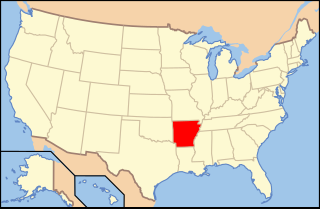Related Research Articles

Helicoplacus is the earliest well-studied fossil echinoderm. Fossil plates are known from several regions. Complete specimens were found in Lower Cambrian strata of the White Mountains of California.
Teinolophos is a prehistoric species of monotreme, or egg-laying mammal, from the Teinolophidae. It is known from four specimens, each consisting of a partial lower jawbone collected from the Wonthaggi Formation at Flat Rocks, Victoria, Australia. It lived during the late Barremian age of the Lower Cretaceous.

Pycnodus is an extinct genus of ray-finned fish from the Eocene period. It is wastebasket taxon, although many fossils from Jurassic or Cretaceous are assigned to this genus, only Eocene species, P. apodus is valid. As its name suggests, it is the type genus of Pycnodontiformes.
Arthurdactylus is a genus of pterodactyloid pterosaur from the Early Cretaceous Crato Formation of northeastern Brazil. It was a medium-sized pterosaur, with a wingspan of 4.5–4.6 metres (14.8–15.1 ft) and body mass of 15 kg (33 lb).

The stylophorans are an extinct, possibly polyphyletic group allied to the Paleozoic Era echinoderms, comprising the prehistoric cornutes and mitrates. It is synonymous with the subphylum Calcichordata. Their unusual appearances have led to a variety of very different reconstructions of their anatomy, how they lived, and their relationships to other organisms.
Jeholotriton is a genus of primitive salamander from the Daohugou Beds near Daohugou village of Inner Mongolia, China.
Wealdenbatrachus is an extinct genus of prehistoric frog known from the Lower Cretaceous of Uña, Spain, which is part of the La Huérguina Formation Its anatomy and relationships have recently been revisited, finding that this frog might be a proficient jumper, and that it was a primitive frog close to the ancestry of all modern frogs.

Shomronella jordanica is the only species in the extinct genus Shomronella, a genus of prehistoric frogs. According to findings from fossils of S. jordanica, that were found in Jordan and Israel, the frog lived during the Lower Cretaceous, specifically in the Hauterivian to Barremian.
Flindersichthys is an extinct genus of prehistoric bony fish that lived during the Albian stage of the Early Cretaceous epoch.
Psilichthys is an extinct genus of prehistoric bony fish from Eumeralla Formation, the Lower Cretaceous epoch of what is now Victoria, Australia, known from single species P. selwyni. This is the first Mesozoic fossil vertebrate named from Victoria.
Occithrissops is an extinct genus of prehistoric ray-finned fish of the Jurassic, described from Sundance Formation. The genus name of Occithrissops refers to the occidental occurrence of the genus and its relationship to Thrissops.
Tinodon is an extinct genus of mammal alive 155–140.2 million years ago (Oxfordian-Berriasian) which has been found in the Morrison Formation, the Alcobaça Formation (Portugal) and the Lulworth Formation (England). It is of uncertain affinities, being most recently recovered as closer to therians than eutriconodonts but less so than allotherians. Two species are known: T. bellus and T. micron.
Dorsetodon is an extinct genus of mammal from the Early Cretaceous (Berriasian) Purbeck Group of Britain. It is represented by isolated lower molars.
Plagiochasma may refer to:

Paleontology in Arkansas refers to paleontological research occurring within or conducted by people from the U.S. state of Arkansas. The fossil record of Arkansas spans from the Ordovician to the Eocene. Nearly all of the state's fossils have come from ancient invertebrate life. During the early Paleozoic, much of Arkansas was covered by seawater. This sea would come to be home to creatures including Archimedes, brachiopods, and conodonts. This sea would begin its withdrawal during the Carboniferous, and by the Permian the entire state was dry land. Terrestrial conditions continued into the Triassic, but during the Jurassic, another sea encroached into the state's southern half. During the Cretaceous the state was still covered by seawater and home to marine invertebrates such as Belemnitella. On land the state was home to long necked sauropod dinosaurs, who left behind footprints and ostrich dinosaurs such as Arkansaurus.
Chuhsiungichthys is an extinct genus of ichthyodectiform ray-finned fish that lived in freshwater environments in what is now Yunnan, China, and Kyushu, Japan, during the Cretaceous. It differs from its sister genus, Mesoclupea, primarily by having a comparatively more anteriorly-placed dorsal fin.
The Del Norte Formation is a geologic formation in Mexico, New Mexico and Texas near the city of El Paso. It preserves fossils dating back to the early Cretaceous period.
Calliderma is an extinct genus of sea stars in the family Goniasteridae. Species are known from the Cretaceous to the Eocene.

Chariaster is an extinct genus of prehistoric starfish in the family Ophidiasteridae. The species C. elegans is found only at Abou Roach.